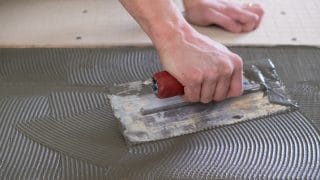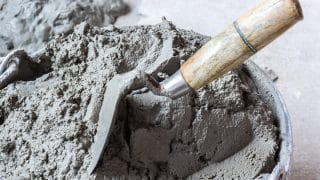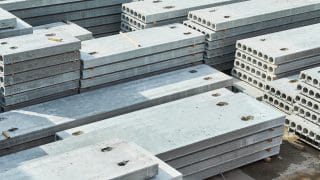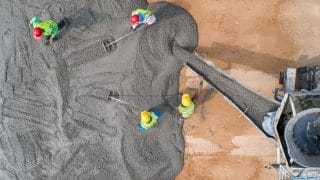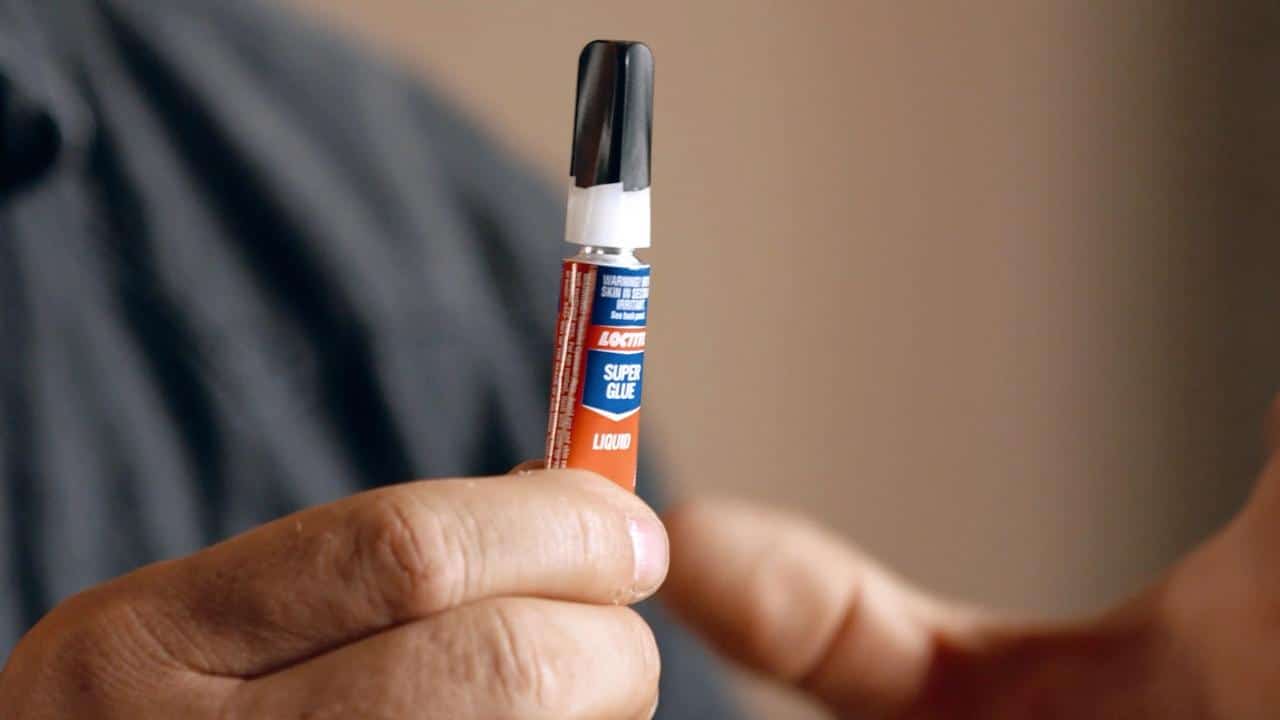
Cyanoacrylate is a group of adhesives that form long and strong polymeric chains in the presence of water. If that term isn’t familiar, you may recognize the brand names of the most popular types of cyanoacrylate adhesives—Super Glue and Krazy Glue.
This type of glue is, in fact, super, crazy strong, with tensile strengths reaching up to 4,000 psi (depending on the material it is bonding) and without any of the mess of a two-part epoxy system.
Given its strength and the relative ease of use, you might wonder why its use is limited to small repairs. Cyanoacrylate has proven revolutionary in the areas of industrial, medical, and technological production and yet it doesn’t play a large part in erecting buildings, because it’s not a great structural adhesive.
How Does Cyanoacrylate Work?
Cyanoacrylate’s acryl groups form polymers in the presence of moisture. “Because moisture is so abundant in our atmosphere,” professional builder Jordan Smith explains, “when you open Super Glue, it doesn’t take long for moisture to get in there and cure the whole tube.” In other cases, however, you may need to add some moisture. When using cyanoacrylate to join non-porous materials like glass or steel, you may want to lightly mist them before applying the glue.
When to Use Cyanoacrylate
The main factor in favor of cyanoacrylate is its ease of use compared to some other adhesive options. However, there are several downsides to consider: a fast set time, which leaves you with little to no time to position and clamp work; and low ductility—brittle bonds that poorly resist impact loading.
Here are the major advantages and disadvantages to consider regarding cyanoacrylate:
Advantages
- Ease of use. Unlike two-part epoxies, there is no complicated mixing required. Just squirt a small amount of the glue onto the surface you want to bond with another.
- Strength. Its tensile strength is comparable to that of epoxies and polyurethane products.
- Versatility. Super glues are compatible with most materials, both porous and non-porous.
- Short work time. In general, no clamping is required with Super Glue. Just hold the two objects you are joining in place for a few minutes and they will be set (though it is best to leave them for 24 hours to cure fully). This can also be a disadvantage in construction—see below.
Why don’t structures fall down or come apart? Learn all about the stuff that holds building materials together in the MT Copeland online Fasteners and Adhesives course. Taught by professional builder Jordan Smith, the course covers topics ranging from nails and screws to glues and epoxies.
Cyanoacrylate is a group of adhesives that form long and strong polymeric chains in the presence of water. If that term isn’t familiar, you may recognize the brand names of the most popular types of cyanoacrylate adhesives—Super Glue and Krazy Glue.
This type of glue is, in fact, super, crazy strong, with tensile strengths reaching up to 4,000 psi (depending on the material it is bonding) and without any of the mess of a two-part epoxy system.
Given its strength and the relative ease of use, you might wonder why its use is limited to small repairs. Cyanoacrylate has proven revolutionary in the areas of industrial, medical, and technological production and yet it doesn’t play a large part in erecting buildings, because it’s not a great structural adhesive.
How Does Cyanoacrylate Work?
Cyanoacrylate’s acryl groups form polymers in the presence of moisture. “Because moisture is so abundant in our atmosphere,” professional builder Jordan Smith explains, “when you open Super Glue, it doesn’t take long for moisture to get in there and cure the whole tube.” In other cases, however, you may need to add some moisture. When using cyanoacrylate to join non-porous materials like glass or steel, you may want to lightly mist them before applying the glue.
When to Use Cyanoacrylate
The main factor in favor of cyanoacrylate is its ease of use compared to some other adhesive options. However, there are several downsides to consider: a fast set time, which leaves you with little to no time to position and clamp work; and low ductility—brittle bonds that poorly resist impact loading.
Here are the major advantages and disadvantages to consider regarding cyanoacrylate:
Advantages
- Ease of use. Unlike two-part epoxies, there is no complicated mixing required. Just squirt a small amount of the glue onto the surface you want to bond with another.
- Strength. Its tensile strength is comparable to that of epoxies and polyurethane products.
- Versatility. Super glues are compatible with most materials, both porous and non-porous.
- Short work time. In general, no clamping is required with Super Glue. Just hold the two objects you are joining in place for a few minutes and they will be set (though it is best to leave them for 24 hours to cure fully). This can also be a disadvantage in construction—see below.
Why don’t structures fall down or come apart? Learn all about the stuff that holds building materials together in the MT Copeland online Fasteners and Adhesives course. Taught by professional builder Jordan Smith, the course covers topics ranging from nails and screws to glues and epoxies.
Disadvantages
- Expense. Cyanoacrylate is substantially more expensive compared to other glues. It isn’t prohibitive for small repairs, but it does mean that you will want to opt for an alternative like wood glue rather than Super Glue if you are framing an entire timber house.
- Unable to fill gaps. For cyanoacrylate to be its most effective, you’ll want to spread it in a thin layer to bond two surfaces that fit tightly together. If the gap between the surfaces is irregular, an epoxy or other adhesive that also works as a filler is a better option.
- Short work time. Yes, short work time can be an advantage but it can also be a disadvantage. You won’t have much of a window to get your object located exactly where you want it before cyanoacrylate begins to harden.
- Low ductility. Although it forms very strong bonds, cyanoacrylate is not very durable or tough—that is, it risks shattering if hit with a fast impact. Think about wood and glass. Wood may bend over time under consistent, heavy compression, but if you hit it with a sledge hammer, it won’t shatter. Glass, on the other hand, will not bend under compression, but it may shatter at impact. Like glass, cyanoacrylate adhesives are strong under compression, but they aren’t tough compared to other adhesives. They’re brittle, and may shatter.
Varieties of Cyanoacrylate
Super Glues come in a number of different formulas which makes them more or less suited to particular tasks. Factors to consider include:
- Viscosity. This describes how liquid a substance is (a high viscosity means it is less “flowy,” to use Jordan’s term). Higher viscosity glues generally take longer to cure, though it can be easier to work with them, especially when applying the adhesive to a vertical surface.
- Temperature. Cyanoacrylate can fail under high temperatures. If your bond will regularly be exposed to heat, seek out one designed to perform under those conditions.
- Strength. All Super Glues create incredibly strong bonds, but if the repair you are making will regularly be subject to high stresses, you’ll want to seek out a maximum strength bond formula.
- Cure time. Compared to other adhesives, Super Glues generally have short work and cure times, but there is still a range among them. If you want to have time for minor adjustments, look for a cyanoacrylate with a longer working time.
Removing Cyanoacrylate
Super Glue’s tendency to react quickly when exposed to moisture is an excellent quality, except when it starts reacting to the moisture in your skin. Here is how to remove cyanoacrylate if it has ended up where you don’t want it.
On Skin
Typically cyanoacrylate will flake away on its own after a few days with regular hand washings. The process can be sped up with the application of acetone (nail polish remover). Lemon juice, margarine or oil, and laundry detergent diluted with water are gentler alternatives.
On Other Surfaces
Here, too, acetone will generally dissolve cyanoacrylate that has ended up on surfaces where you don’t want it. Alternatives for materials that may be damaged by acetone (like wood, plastic, and fabrics) include soapy water and diluted vinegar. After treating the area where the glue has been spilled, any remaining residue can often be removed using sandpaper.
MT Copeland offers video-based online classes that give you a foundation in construction fundamentals with real-world applications. Classes include professionally produced videos taught by practicing craftspeople, and supplementary downloads like quizzes, blueprints, and other materials to help you master the skills.


